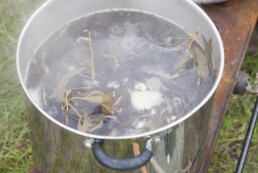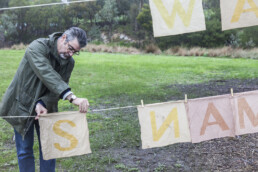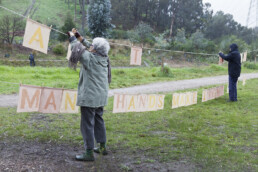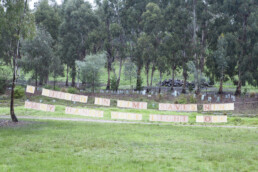ATTENDING THE MERRI2012 - ONGOING
This ongoing project examines plant/human relations in the context of citizen restoration and visual arts practice at the Merri Creek in Melbourne. I look at relations between volunteer workers, flora and restoration sites. I use the analogous and repeatable methods of making found in printing and textile production to examine the iterative and performative processes of planting, weeding and collecting rubbish. I source plant dyes from the creek, and then make props and garments to bring to Friends of Merri Creek restoration events. Volunteers wear the textiles if they wish. Through attending to relations between volunteers and plants, a gift economy of care and support is revealed.
Cooper street – Gorse mop-up
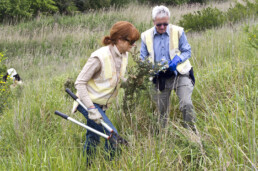

Zeltbahn (as shelter tent) and Weedy-vis Jackets, Cooper St Grassland gorse mop-up
November 2013
Calico dyed and screenprinted with weeds and indigenous plants from the Merri Creek, zinc buttons, eyelets, tope, tent poles
Each tent quarter 200 x 200 x 280 cm
Strettle street – Weeding and planting
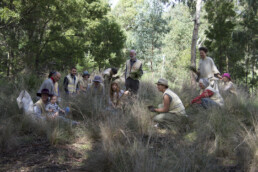
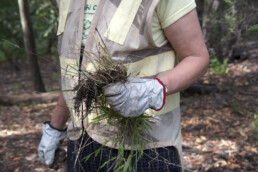
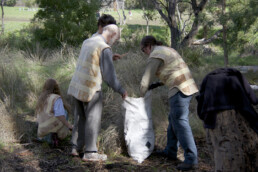
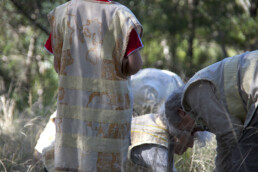
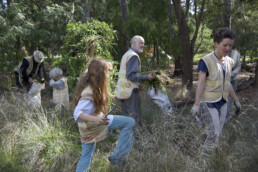
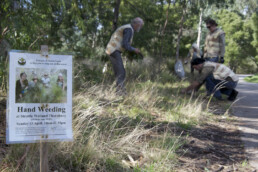
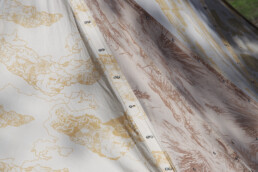
Zeltbahn (as shelter tent) and Weedy-vis Jackets, Strettle Wetland community weeding, Merri Creek, Thornbury
April 2014
Calico dyed and screenprinted with weeds and indigenous plants from the Merri Creek, zinc buttons, eyelets, tope, tent poles
Each tent quarter 200 x 200 x 280 cm
Edgar's Creek – Planting
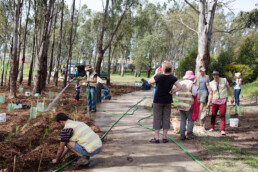
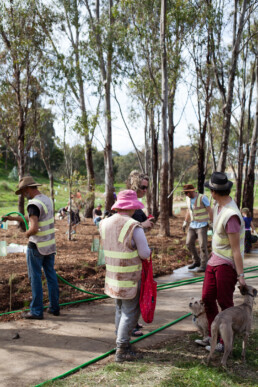
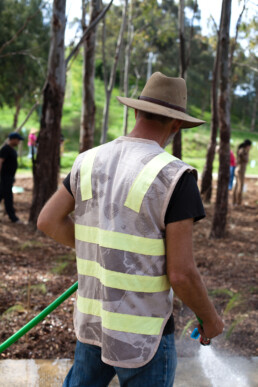
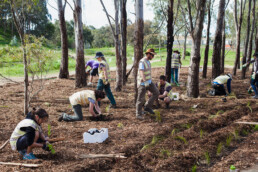
Weedy-vis jackets, Edgar’s Creek community planting
September 2013
Calico dyed and screenprinted with weeds and indigenous plants from the Merri Creek catchment
Zeltbahnen Installation RMIT Gallery
RMIT Gallery – Out of the Matrix
Curator: Richard Harding
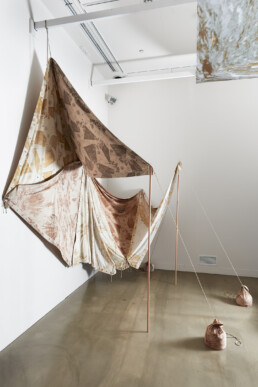

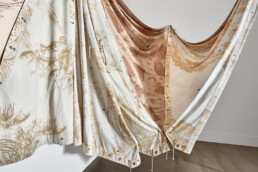
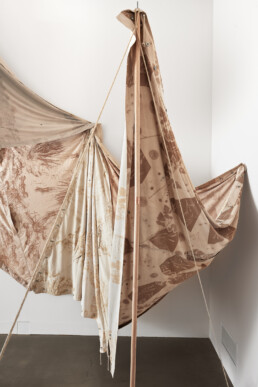
Merri Creek Zeltbahnen (Installation view RMIT Gallery – Out of the Matrix)
2013 – 2016 (ongoing)
Calico dyed and screenprinted with indigenous and exotic plants of the Merri Creek, zinc buttons, eyelets, hemp rope, tent poles
dimensions variable
Photography Matthew Stanton
Edgar's creek – Bush DyeingEdgar's Creek World Environment Day EventJune 5th 2016
In an act reminiscent of bush dyeing, dye-pots were taken to the creek. Pre-mordanted handkerchief-sized squares of fabric were dyed in melaleuca bark or eucalyptus leaves collected at the site. On dyeing, each square revealed one letter. The letters, pegged to the line, were arranged and re-arranged until a familiar saying (or two) was revealed.
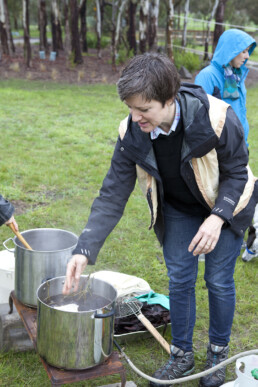

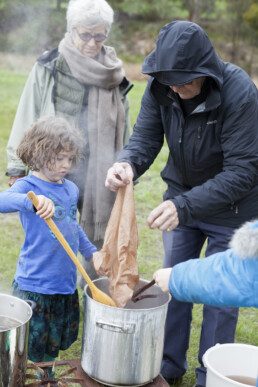
Many hands make light work and A stitch in time saves nine
June 2016
Pre-mordanted cloth dyed with melaleuca bark and eucalypt leaves
